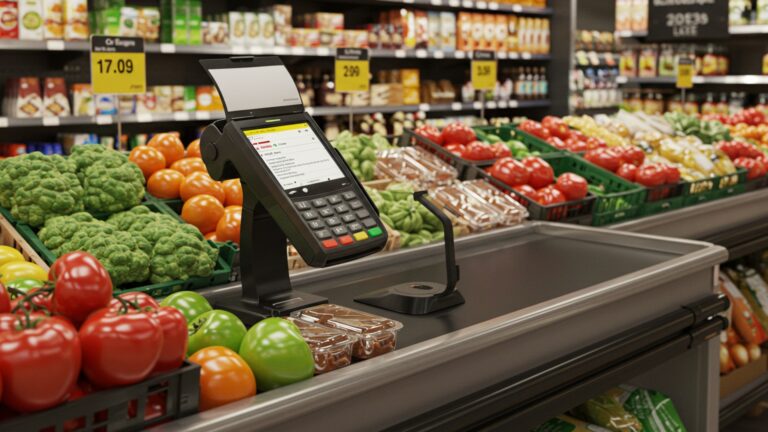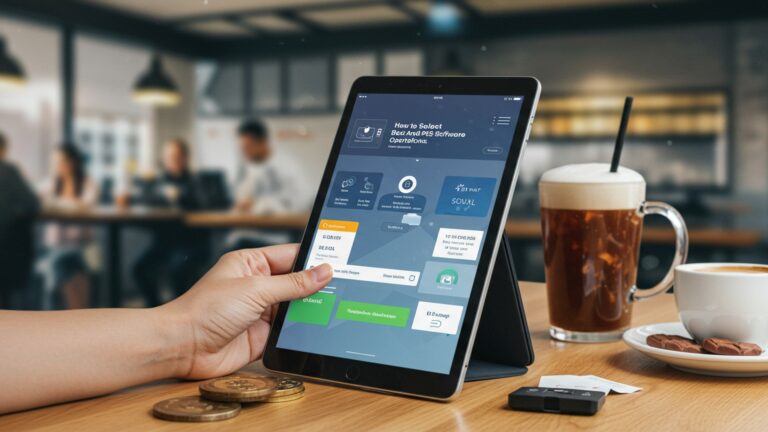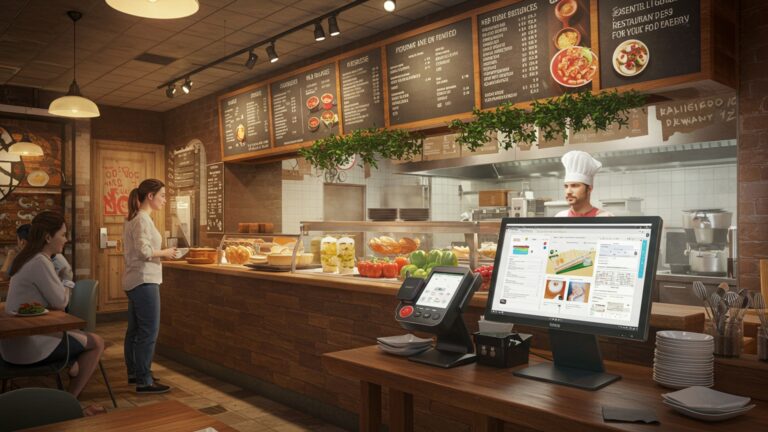How to Streamline Restaurant Operations with Effective POS Software
The contemporary restaurant landscape, characterized by surging demand for swift service and personalized experiences, necessitates more than just culinary prowess; it demands operational mastery. Gone are the days when a basic cash register sufficed; modern eateries leverage advanced restaurant pos software as a strategic imperative. Recent innovations, such as integrated online ordering platforms, real-time inventory tracking. mobile table-side terminals, demonstrate how a robust POS system transcends simple transaction processing. It now acts as a central operational hub, empowering establishments to optimize everything from contactless payments and staff scheduling to loyalty programs and kitchen display systems, effectively transforming daily chaos into a data-driven, streamlined workflow. This integration is crucial for maintaining agility and profitability in today’s fiercely competitive market.

Understanding the Core: What is Restaurant POS Software?
At its heart, a Point of Sale (POS) system is the place where a customer makes a payment for goods or services. While the term might evoke images of simple cash registers, modern POS technology, especially specialized restaurant POS software, has evolved into a sophisticated, integrated management platform crucial for operational efficiency. It’s not merely about processing transactions; it’s about managing every facet of a restaurant’s daily operations, from the moment an order is placed to the final accounting entry.
Historically, restaurants relied on manual order pads, separate cash registers. handwritten inventory logs. This created bottlenecks, errors. significant time drains. Today, a robust restaurant POS system centralizes these functions, acting as the digital nerve center of your establishment. It integrates hardware (like touchscreens, card readers, receipt printers) with specialized software designed to meet the unique demands of food service businesses.
Key components typically found within comprehensive restaurant POS software include:
- Order Management
- Payment Processing
- Inventory Management
- Customer Relationship Management (CRM)
- Reporting and Analytics
- Employee Management
Taking orders, customizing dishes, sending orders directly to the kitchen display system (KDS) or printers.
Handling various payment types (cash, credit/debit cards, mobile payments, gift cards) securely and efficiently.
Tracking ingredients, monitoring stock levels. generating purchase orders.
Building customer databases, managing loyalty programs. personalizing service.
Providing insights into sales, popular dishes, employee performance. peak hours.
Tracking clock-ins/outs, managing shifts. calculating payroll hours.
The Modern Restaurant’s Challenge: Why Streamlining is Crucial
The restaurant industry is notoriously competitive and high-pressure. Margins are often tight, customer expectations are soaring. operational complexities can quickly overwhelm even the most dedicated teams. Without streamlined processes, restaurants face a multitude of challenges that directly impact profitability and customer satisfaction:
- Manual Errors
- Slow Service
- Lack of Data Insights
- Inventory Wastage
- Compliance Issues
Handwritten orders can be misread, leading to incorrect dishes, wasted food. frustrated customers. Manual inventory counts are prone to inaccuracies, resulting in stockouts or excessive spoilage.
Disjointed communication between front-of-house and back-of-house, or cumbersome payment processes, can significantly slow down service, especially during peak hours, reducing table turnover and customer satisfaction.
Without digital records, understanding sales trends, identifying best-selling items, or analyzing employee performance becomes guesswork, making strategic decision-making difficult.
Poor inventory tracking leads to over-ordering perishable goods, resulting in spoilage, or under-ordering popular items, leading to lost sales.
Managing labor laws, tax regulations. payment security standards manually is a time-consuming and error-prone process.
These challenges highlight an urgent need for automation and integration. An effective restaurant POS software solution is no longer a luxury but a fundamental tool for survival and growth in today’s dynamic culinary landscape.
Key Features of Effective Restaurant POS Software for Operational Efficiency
The power of modern restaurant POS software lies in its comprehensive feature set, each designed to tackle specific operational bottlenecks. Here’s a closer look at how these features streamline various aspects of your restaurant:
- Advanced Order Management
- Table Management
- Customizable Menus
- Kitchen Display Systems (KDS) Integration
- Order Modifiers
- Seamless Payment Processing
- Integrated Payments
- Diverse Payment Options
- Tip Management
- PCI Compliance
- Robust Inventory Management
- Real-time Tracking
- Vendor Management
- Recipe Management
- Waste Reduction
- Customer Relationship Management (CRM) & Loyalty Programs
- Customer Databases
- Loyalty Programs
- Feedback Collection
- Comprehensive Reporting & Analytics
- Sales Reports
- Cost of Goods Sold (COGS)
- Labor Reports
- Trend Analysis
- Employee Management
- Time Clock Integration
- Shift Scheduling
- Performance Tracking
- Online Ordering & Delivery Integration
- Seamless Web Presence
- Delivery Platform Integration
Visual layouts allow staff to assign tables, track order status. manage waitlists efficiently.
Easily update prices, add daily specials, or mark items as out of stock instantly across all terminals.
Orders are digitally sent to the kitchen, eliminating handwritten tickets, reducing errors. improving communication speed. Chefs can prioritize orders and track cooking times.
Simple interface for adding customizations (e. g. , “no onions,” “extra cheese”) directly to the order, ensuring accuracy.
Directly connect to payment processors, reducing manual entry errors and speeding up transaction times.
Support for EMV chip cards, NFC mobile payments (Apple Pay, Google Pay), gift cards. split payments.
Automated tip pooling and reporting simplifies payroll and ensures fairness.
Ensures secure handling of customer credit card data, reducing fraud risk and protecting your business.
Monitor ingredient levels as they are used in dishes, providing an accurate, up-to-the-minute view of stock.
Track supplier insights, purchase orders. delivery schedules.
Define recipes with precise ingredient quantities to accurately deplete inventory with each sale.
By accurately tracking usage and predicting demand, you can minimize spoilage and over-ordering. This feature alone can significantly impact your bottom line, as food waste is a major cost factor for restaurants.
Collect customer data (contact info, order history, preferences) to personalize marketing efforts.
Implement points-based systems, discounts, or special offers to reward repeat customers and encourage future visits.
Some systems integrate with feedback tools to gather customer opinions directly.
Detailed breakdowns by item, category, time of day. employee.
comprehend the true cost of your menu items.
assess employee productivity, overtime. labor costs.
Identify peak hours, popular dishes. slow periods to optimize staffing and menu offerings. This data-driven approach allows managers to make informed decisions rather than relying on intuition.
Digital clock-in/out features for accurate time tracking.
Some advanced systems offer tools for creating and managing employee schedules, considering availability and labor costs.
Monitor individual server sales, tips. order accuracy.
Integrate with your website for direct online orders, bypassing third-party fees.
Connects with popular food delivery services (e. g. , DoorDash, Uber Eats) to consolidate orders on one system, reducing the need for multiple tablets and manual re-entry.
Real-World Impact: How POS Transforms Restaurant Workflows
The theoretical benefits of restaurant POS software become truly compelling when observed in real-world scenarios. Consider the transformation:
- Case Study 1: The Busy Bistro’s Efficiency Leap
- restaurant POS software
- Case Study 2: The Multi-Location Chain’s Inventory Mastery
- restaurant POS software
- Reduce Errors & Waste
- Accelerate Service
- Gain Business Intelligence
- Improve Customer Loyalty
- Empower Staff
Digital order entry and KDS integration eliminate miscommunication and reduce food waste.
Faster order taking, direct kitchen communication. quick payment processing enhance customer experience and increase table turnover.
Utilize robust reporting features to interpret sales trends, optimize menus. make data-driven decisions on staffing and promotions.
Implement loyalty programs and leverage customer data to offer personalized experiences, turning first-time guests into regulars.
User-friendly interfaces reduce training time and empower employees to provide better, more efficient service.
Choosing the Right Restaurant POS Software: A Comparative Approach
With a plethora of options available, selecting the ideal restaurant POS software can seem daunting. The “best” system isn’t universal; it’s the one that best fits your specific restaurant’s needs, budget. operational model. A critical early decision involves choosing between cloud-based and on-premise solutions:
| Feature | Cloud-Based Restaurant POS Software | On-Premise Restaurant POS Software |
|---|---|---|
| Installation & Hosting | Software hosted on remote servers, accessed via internet. | Software installed directly on your restaurant’s hardware. |
| Cost Structure | Typically subscription-based (monthly/annual fees). Lower upfront cost. | High upfront cost for software license and hardware. Lower ongoing fees. |
| Accessibility | Access from any internet-connected device, anywhere, anytime. Ideal for multi-location management. | Limited to the restaurant’s local network. Remote access often requires complex setup. |
| Updates & Maintenance | Automatic updates and maintenance handled by the provider. | Manual updates, patches. maintenance often managed by the restaurant or an IT contractor. |
| Data Security | Managed by the provider, often with robust, professional-grade security. Relies on provider’s compliance. | Managed by the restaurant. Requires internal expertise and resources to maintain security. |
| Scalability | Highly scalable; easy to add terminals or locations as you grow. | Can be complex and expensive to scale, often requiring new hardware and licenses. |
| Offline Capability | Some offer limited offline mode, syncing data when connectivity returns. | Fully functional even without internet connection (though external services like credit card processing might be affected). |
Beyond this fundamental choice, consider these crucial factors:
- Specific Restaurant Type
- Integration Capabilities
- Ease of Use & Training
- Customer Support
- Hardware Compatibility
- Reporting & Analytics Depth
- Security Features
- Cost
Are you a quick-service restaurant (QSR), fine dining, bar, or food truck? Each has unique needs (e. g. , QSRs need speed, fine dining needs detailed table management).
Does the POS integrate seamlessly with other essential tools like accounting software (e. g. , QuickBooks), online ordering platforms, loyalty programs, or third-party delivery services? API (Application Programming Interface) capabilities are key here, allowing different software systems to “talk” to each other.
A user-friendly interface reduces training time for staff and minimizes operational errors. Intuitive design is paramount.
24/7 support is vital in the restaurant industry, where issues can arise at any time. Look for providers with strong reputations for responsive and knowledgeable support.
Ensure the software works with existing hardware or that recommended hardware is cost-effective and reliable.
Does it provide the specific data insights you need to make informed business decisions?
Beyond PCI compliance, consider features like employee role-based access, data encryption. robust backup solutions.
Evaluate not just the upfront cost but also ongoing subscription fees, maintenance. potential hidden costs for integrations or support.
For example, a small coffee shop might prioritize an affordable, user-friendly cloud-based system with robust payment processing and loyalty features. A large, multi-location fine dining establishment, conversely, might require advanced table management, detailed inventory control for expensive ingredients. sophisticated CRM capabilities, potentially justifying a higher investment in a more comprehensive restaurant POS software solution.
Implementing and Maximizing Your POS Investment
Acquiring the right restaurant POS software is just the first step. Successful implementation and ongoing optimization are critical to realizing its full potential and ensuring a strong return on your investment.
- Map Your Current Workflow
- Menu Digitization
- Customer and Employee Data
Before installation, meticulously document your existing operational processes. This helps identify areas where the POS can introduce the most significant improvements and guides the configuration.
Accurately input your entire menu, including prices, modifiers, descriptions. ingredient allocations for inventory tracking. This is a foundational step that requires precision.
Migrate any existing customer databases for loyalty programs and input employee profiles, roles. access permissions.
- Phased Training
- Hands-On Practice
- Designated Super Users
- Refresher Courses
Don’t overwhelm staff. Start with core functions relevant to each role (e. g. , servers learn order entry, kitchen staff learn KDS, managers learn reporting).
Provide ample opportunity for staff to practice on the new system in a non-live environment before launch day. Create mock scenarios to build confidence.
Train a few key staff members to become system experts. They can act as internal support and troubleshoot minor issues, reducing reliance on external support.
Schedule follow-up training sessions as new features are introduced or to address common user errors.
- Staggered Launch (if possible)
- On-Site Support
- Feedback Loop
For complex systems, consider a soft launch during off-peak hours or with a limited menu to iron out kinks.
Ideally, have a representative from the POS provider or an internal “super user” present during the initial launch days to address immediate issues.
Encourage staff to provide feedback on the system’s usability and any challenges they encounter. Use this feedback for continuous improvement.
- Regular Reporting Review
- Menu Engineering
- Inventory Audits
- Software Updates
- Data Backup
- Access Control
Make it a habit to review the data generated by your restaurant POS software. Look for trends in sales, popular items, labor costs. inventory discrepancies. These insights are gold for making informed business decisions.
Use POS sales data to optimize your menu. Identify high-profit, high-popularity items to promote. consider adjusting or removing underperforming dishes.
Periodically cross-reference your POS inventory data with physical counts to ensure accuracy and identify potential issues like theft or excessive waste.
Always keep your POS software updated to the latest version. Updates often include new features, performance enhancements. crucial security patches.
Even with cloud-based systems, grasp your data backup strategy. For on-premise systems, establish a robust, regular backup routine to prevent data loss.
Regularly review employee access permissions. Ensure that staff only have access to the functions necessary for their role, enhancing internal security.
By treating your restaurant POS software as a continuous improvement project rather than a one-time installation, you can unlock its full potential to drive efficiency, profitability. customer satisfaction for years to come.
Conclusion
Embracing effective POS software isn’t merely an upgrade; it’s a strategic overhaul for any restaurant, transforming daily chaos into seamless operations. From streamlining order-taking with integrated handheld terminals that feed directly into the Kitchen Display System (KDS), preventing costly errors and speeding service, to optimizing inventory in real-time – no more “sorry, we’re out” for your most popular dish – its impact is profound. I recall a bustling pizzeria that cut their average table turnover time by 18% simply by leveraging integrated table management and contactless ordering via QR codes, drastically improving both customer satisfaction and revenue during peak hours. My personal tip? Don’t just look for features; prioritize a system that offers robust analytics, allowing you to predict demand, manage staff more effectively. adapt to evolving trends. By making an informed choice, you’re not just buying software; you’re investing in a more efficient, profitable. less stressful future for your establishment. Take that decisive step; the operational harmony and elevated customer experience await.
More Articles
Elevate Your Restaurant How to Choose the Right POS Software for Success
A Complete Guide How to comprehend and Use Essential POS Software Features
Future Proof Your Business How to Leverage Cloud Based POS Software Benefits
Unlock Flexibility How to Implement Android POS Software for Your Business
Unleash Business Mobility How to Implement Mobile POS Software Solutions Seamlessly
FAQs
What exactly is POS software and how does it benefit my restaurant?
POS software, or Point of Sale software, is the central nervous system for your restaurant. It handles everything from taking orders and processing payments to managing inventory and tracking sales. The main benefit is bringing all these operations under one roof, making them faster, more accurate. easier to manage, ultimately streamlining your entire workflow.
Can a modern POS system really speed up our order process?
Absolutely! A good POS system drastically cuts down on order times. Servers can take orders tableside using handheld devices, sending them directly to the kitchen display system (KDS) or printer. This eliminates manual errors, reduces walking back and forth. ensures orders are prepared faster, leading to quicker table turnover and happier guests.
How does POS help keep track of all our ingredients and supplies?
Effective POS software often includes robust inventory management features. It automatically updates stock levels every time an item is sold, helping you monitor ingredient usage in real-time. You can set up alerts for low stock, track supplier insights. even manage recipes to control portioning, significantly reducing waste and optimizing your purchasing.
What about managing staff schedules and payroll with a POS?
Many POS systems offer integrated labor management tools. You can create and manage staff schedules, track employee clock-ins and outs. monitor labor costs directly through the system. This helps ensure proper staffing levels, minimizes overtime. simplifies payroll processing by providing accurate hour logs, saving you time and money.
Will our customers notice a difference if we use better POS technology?
Definitely! Customers will experience faster service, more accurate orders. quicker payment processing. Some advanced systems even allow for online ordering, loyalty programs, or self-ordering kiosks, all of which enhance convenience and overall customer satisfaction. A smooth operation always translates to a better customer experience.
Is it a nightmare to get a new POS system up and running?
While any new system requires some setup and training, modern POS software is designed to be user-friendly. Many providers offer comprehensive support, including installation, menu setup. staff training. The initial effort quickly pays off in terms of improved efficiency and fewer operational headaches down the line.
How does a POS help me interpret my restaurant’s performance better?
A powerful POS system generates detailed reports on virtually every aspect of your business. You can assess sales trends by hour, day, or week, identify your most popular menu items, track server performance. grasp your peak operating times. These insights are invaluable for making informed decisions about staffing, menu adjustments. marketing strategies.
So, what’s the big win for my restaurant’s bottom line?
The big win is improved profitability. By streamlining operations, reducing waste, optimizing labor costs, enhancing customer satisfaction. providing crucial business insights, a good POS system helps you run a more efficient, cost-effective. ultimately, more profitable restaurant. It turns chaos into control, directly impacting your financial success.






